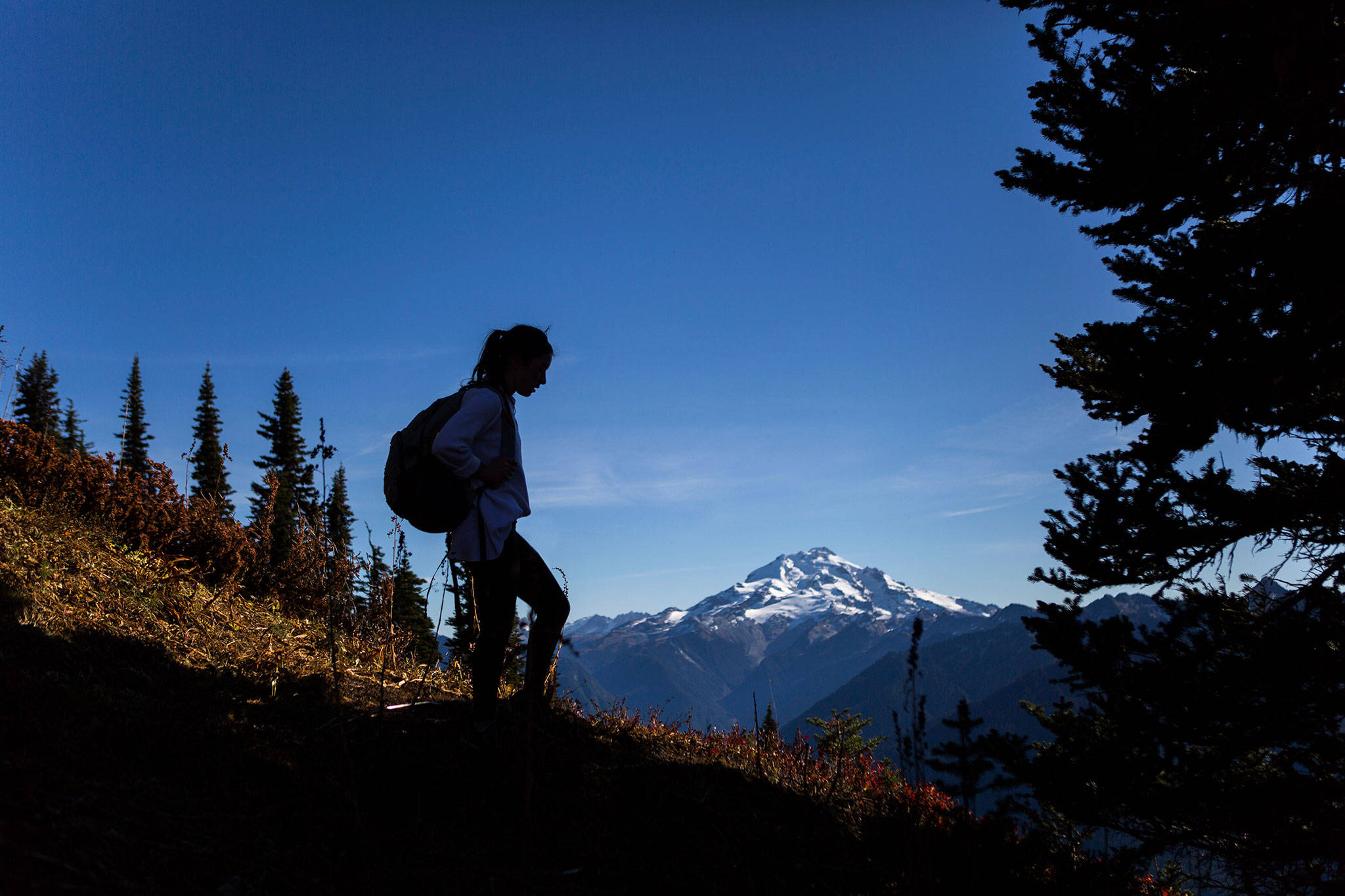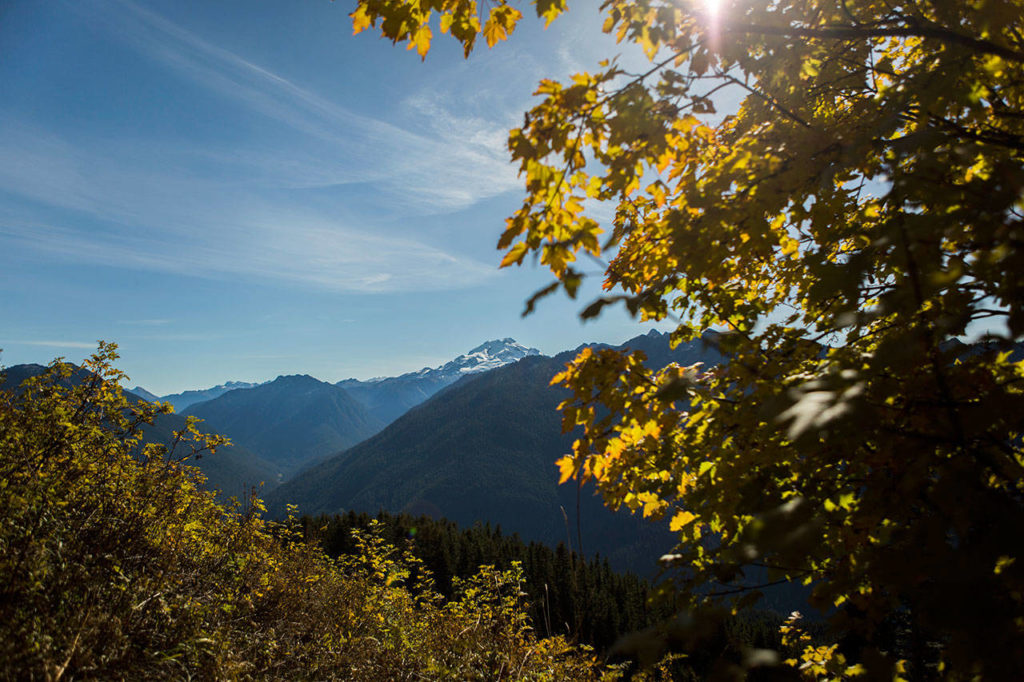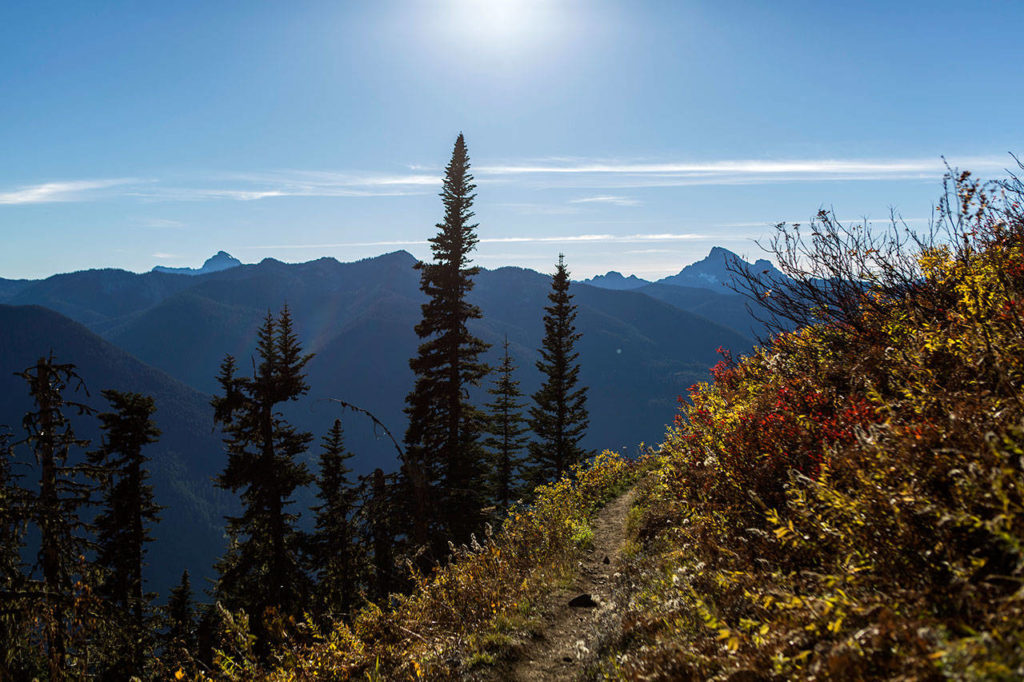I had a feeling November is a tricky time to be hiking mountain trails.
I was right.
While it’s not technically winter yet, climbs that were possible in October are a different beast these days.
My friend Kyle James and I learned this the hard way last weekend when snow and waning daylight cut short our hike to Green Mountain Lookout near Darrington.
We had been dead-set on reaching the lookout, perched at about 6,500 feet with a panoramic view of the North Cascades. But we learned that there’s nothing wrong with turning back.
So what if our hike didn’t end with striking a pose for Instagram at the summit? We still got a chance to enjoy nature and breathe clean air. And our failed attempt also inspired me to get educated about safely hiking mountain trails this time of year.
Green Mountain Lookout trail is considered one of the state’s most stunning hikes by the Washington Trail Association. The 8.5-mile journey traverses woods and meadows, and ends at a historic lookout originally built in 1933 to house seasonal fire lookouts. The lookout was added to the National Register of Historic Places in 1987.
My coworker, photographer Olivia Vanni, made the climb in October. She said it was a beautiful but time-consuming hike.
Word to the wise: If you want to reach the summit, get to the trailhead early.
Our first mistake: A late start
We left Kyle’s house in Seattle at 9 a.m., expecting to start our climb around noon. This was far too late — we should have reached the trail by 10 a.m., at the latest.
Deep potholes pockmarked the 12 miles of forest road leading up the mountain. We were driving a car, not a Jeep, so we took our time dodging them. We had no cell service and couldn’t risk any damage.
Finally, after an hour and a half of winding up the mountain, we reached the trailhead, elevation 3,200 feet. The air was crisp and chilly but refreshing. Kyle remarked that it was the best air he’d tasted in a while.
The first leg of the climb weaved through moss-shrouded Douglas firs. Patches of snow covered parts of the trail, but it was manageable in my tennis shoes. Kyle, the smarter of us, wore hiking boots.
We stopped at a gushing waterfall for a break, then continued our trek up the steep trail.
A while later, we emerged from the woods and were greeted with the sight of knee-deep snow on the mountainside. Looking up ahead, we could see the outlines of switchbacks traversing the ridge.
This was not too surprising; the most recent trail report I had read for the trail was written in October, and I assumed a lot changed since then.
We decided to turn back. By this time it was early afternoon; our pace would be too slow through the snow, and we wanted to leave enough daylight to weave our car around the myriad potholes on the return trip down the forest road.
Though we were both motivated to see the summit, we knew it was the right call. We had fun finding the trail and even more fun climbing part of it.
Lessons learned
When I reflected on the trip, it dawned on me that I was in no way prepared for what we faced. I naively thought it’d be a walk in the woods.
Don Sarver, safety officer and wilderness first aid instructor for The Mountaineers’ Everett Branch, offered tips for hikers planning to explore mountain trails this time of year.
■ Check the weather forecast for the day of your trip. Sarver is a fair-weather hiker, so if the conditions are stormy or snowy, it’s a no-go for him.
■ Read trip reports written by other hikers online — you can find them on the Washington Trail Association’s website — to gauge the trail’s conditions. If there aren’t any recent updates, find a report for a nearby mountain, which will likely have similar conditions.
■ Plan your day and turnaround time. If it’s overcast, it will get darker quicker.
■ If you see other hikers, ask them what the trail’s conditions are and exchange other basic information, such as how long you plan to stay out there.
■ Bring proper footwear with microspikes — not tennis shoes — to ensure traction.
■ Opt for trails below 4,000 feet elevation if you want to avoid snow.
■ Don’t assume accidents can’t happen to you. Hope for the best, but prepare for the worst.
■ Finally, don’t forget the 10 essentials: navigation (map, compass and GPS system), sun protection, insulation (jacket, hat gloves, rain shell and thermal underwear), illumination (flashlight, not your smartphone’s light), first aid kit, fire starter, repair kit (duct tape, knife, screwdriver and scissors), nutrition and water.
Kyle and I brought less than half of these. Probably the most glaring thing missing from our packs was a first aid kit. And we’re not talking about a couple of Band-Aids; Sarver said a proper first aid kit should be equipped to handle sprained ankles, broken bones and gashes.
The 38-year-old Everett man knows this rule of thumb better than most.
In 2017, he survived a near-fatal accident in 2017 while climbing a subsidiary peak on Mount Rainier. During his descent, he slipped and slid 500 feet down the mountain, breaking his back and cutting an artery in his forearm in the process.
He was climbing with two doctors and figured he was safe, so to make his pack lighter he opted not to bring a first aid kit.
Ironically, the doctors were at the summit when Sarver was injured. They couldn’t help.
Fortunately, Sarver had medical training in the Army and managed to fashion a tourniquet with his ice axe and a leash and keep himself from bleeding out. He was later airlifted to a hospital and made a full recovery.
Though climbing Mount Rainier and Green Mountain Lookout are vastly different, Sarver said the point is to be overly cautious — no matter what.
“The mountain and the weather is going to beat you every time,” Sarver said. “You can always turn around and come back when conditions are better.”
Evan Thompson: 425-339-3427, ethompson@heraldnet.com. Twitter: @ByEvanThompson.
Talk to us
> Give us your news tips.
> Send us a letter to the editor.
> More Herald contact information.



























